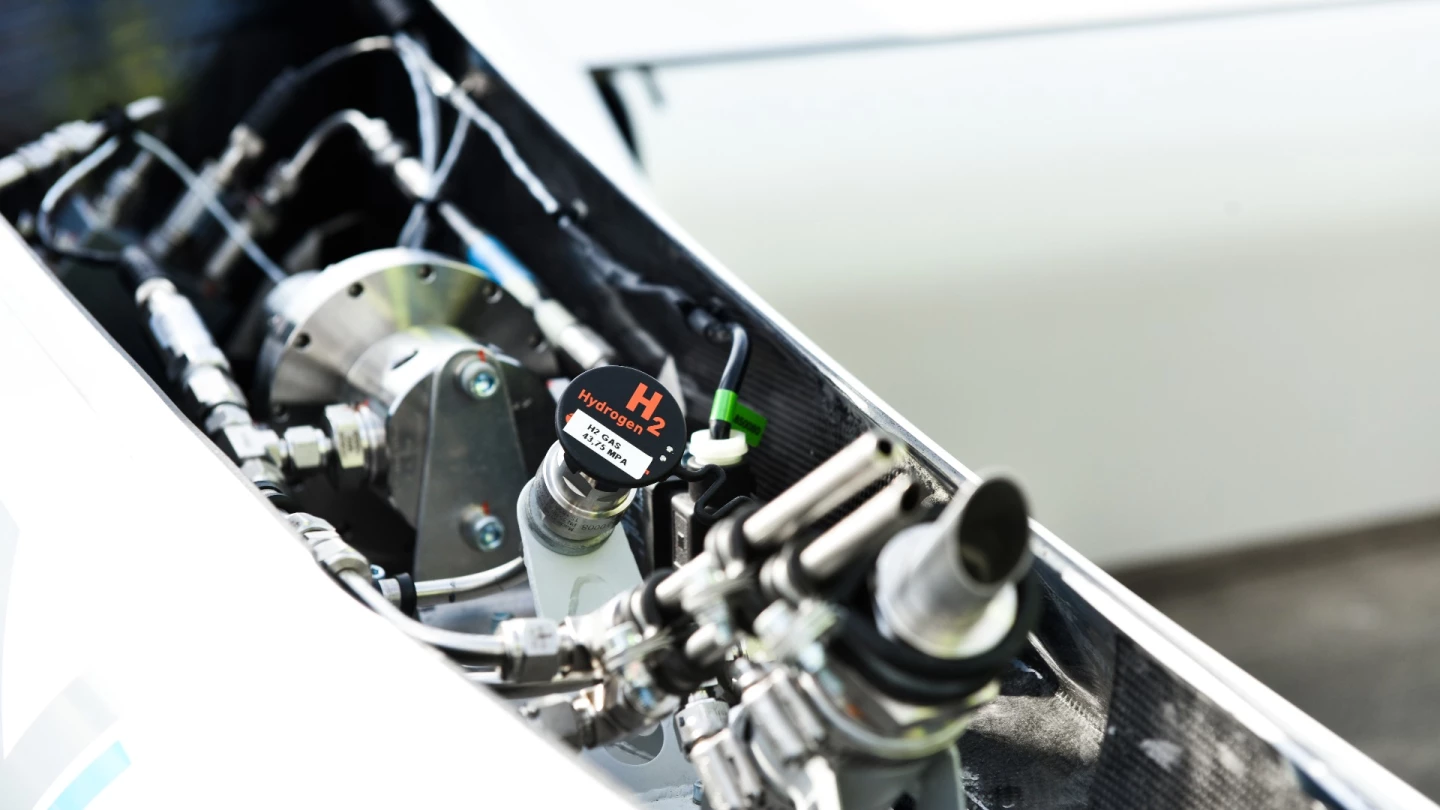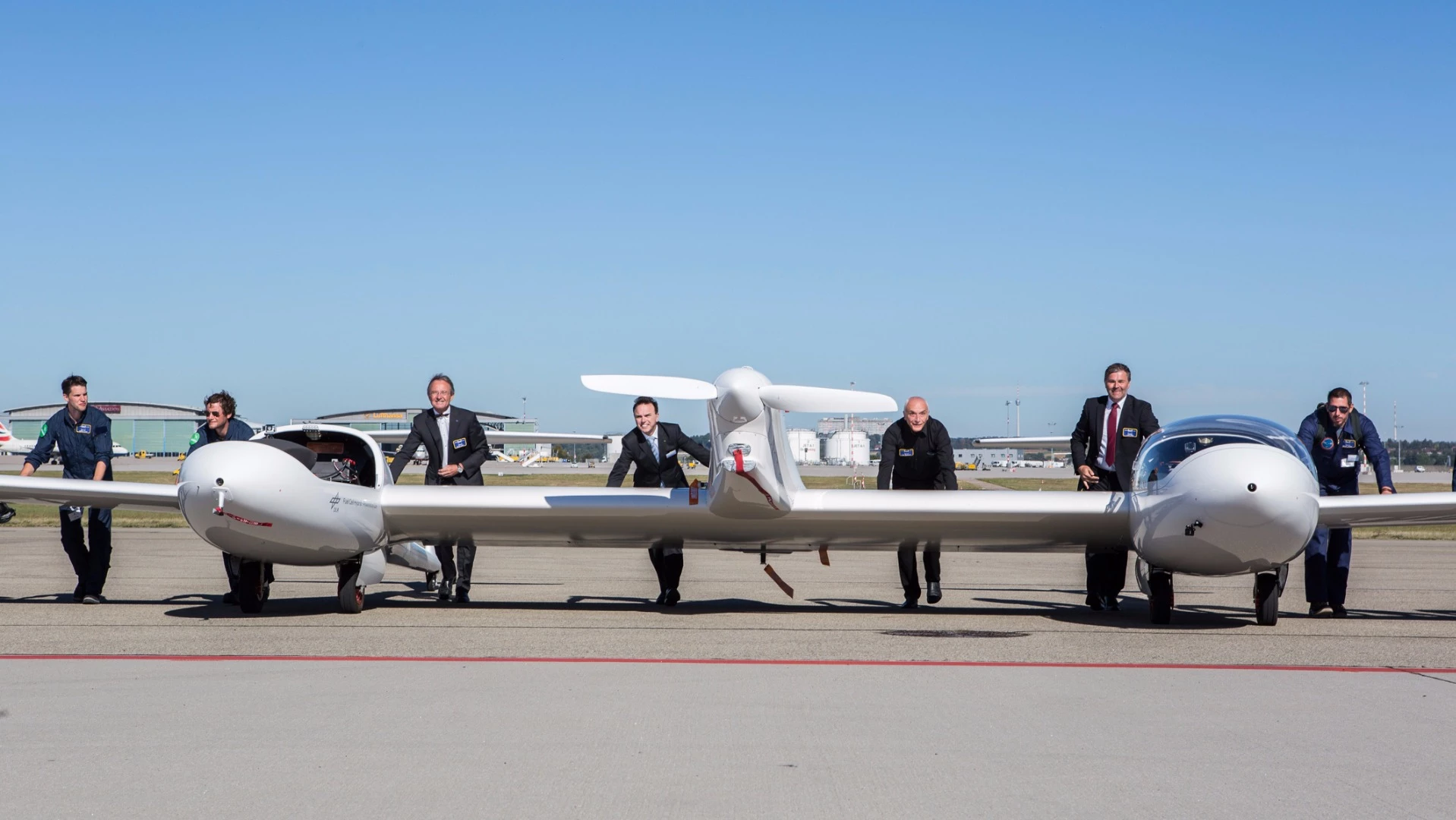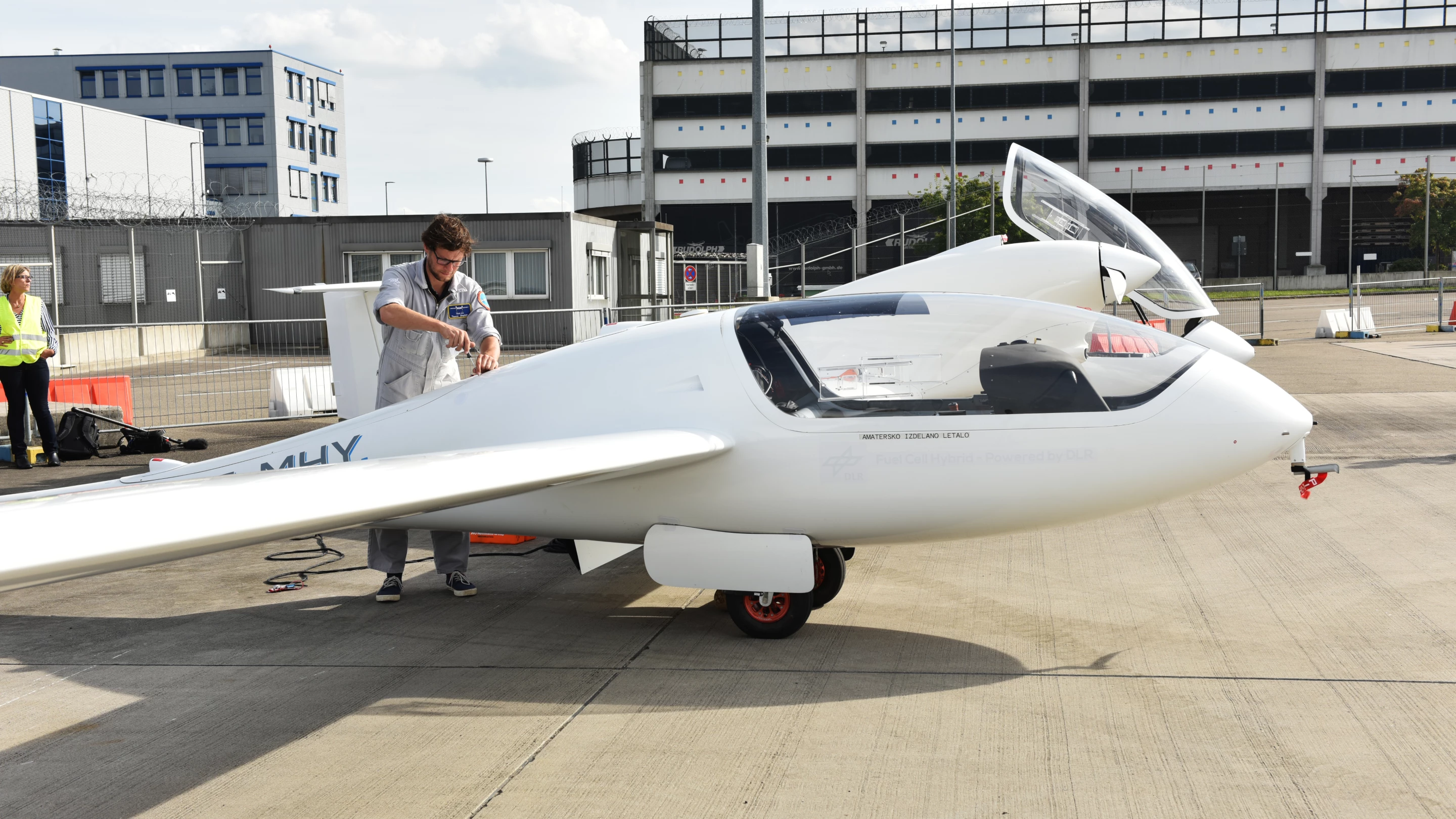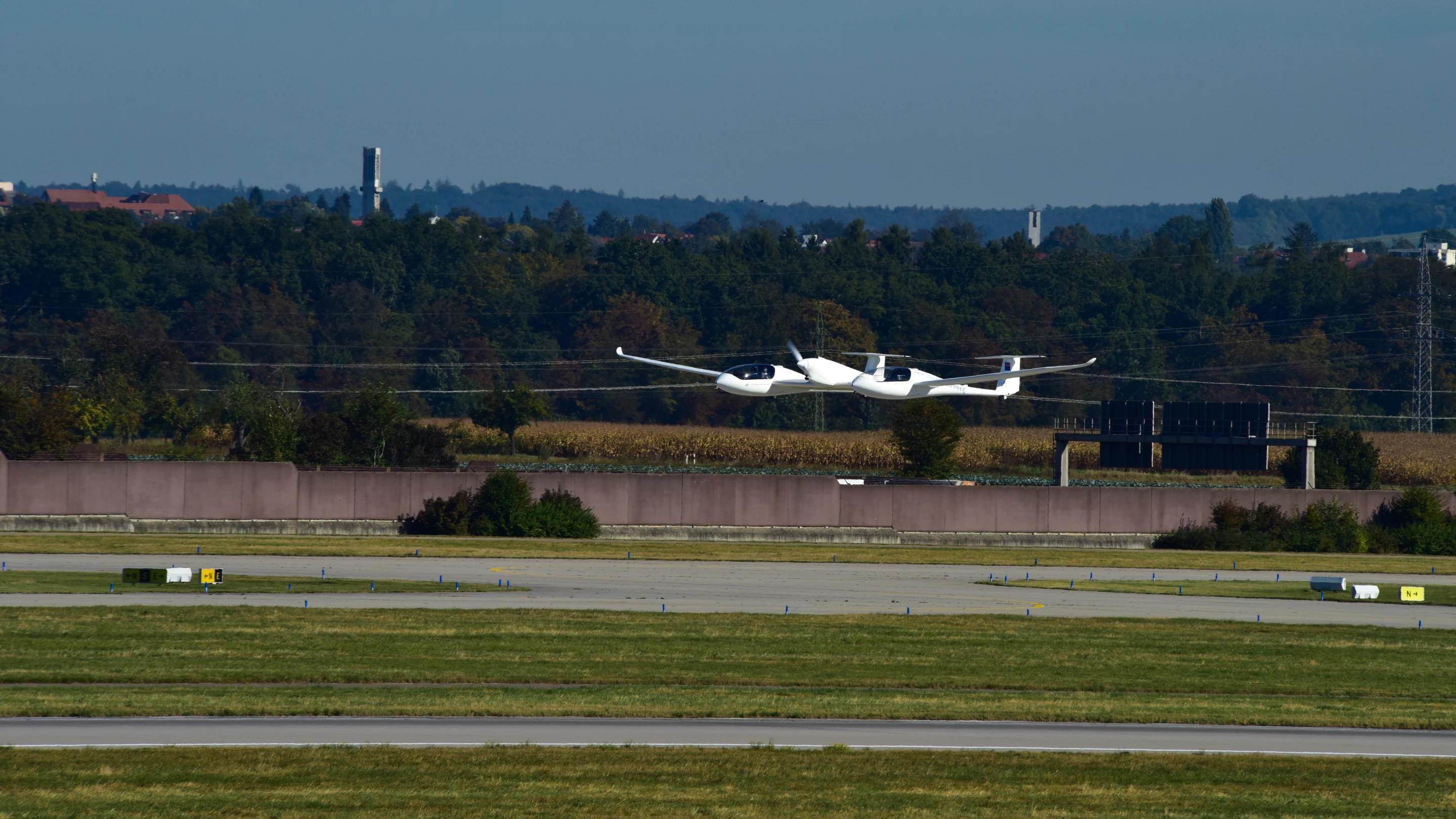A collaboration of aircraft makers, fuel cell developers and university engineers have come a step closer to zero emission passenger flights with the first flight of a hydrogen fuel cell four-seater electric aircraft. The twin-cabin, (relatively) low-noise HY4 took off at 11:15 am (local) today for a quick zip around Stuttgart Airport.
The HY4's 21.36 m (70 ft) wing is home to the HY4's central single propeller with a two-seater fuselage on either side, a design that's said to allow for "optimal distribution of the drive components and a higher total loading capacity." Each fuselage is home to a 9 kg (20 lb) hydrogen storage tank that feeds the four low temperature Proton Exchange Membrane fuel cell modules sat behind the prop. These cells convert hydrogen and oxygen into water and electrical energy.

The developers are keen to point out that should the hydrogen needed for the fuel cells be produced using renewable energy, the aircraft would fly completely emission-free – though there was no mention of where the fuel was sourced for today's test flight.
The cells continuously power the aircraft's electric motor during flight, while 21 kWh lithium polymer battery packs help out during take-off and climb. The HY4 is reckoned capable of a maximum range of 1,500 km (930 mi), though this will depend on speed, altitude and load. It's 80 kW electric motor is said to make a maximum speed of around 200 km/h (124 mph) possible, with a cruising speed given as 145 km/h (90 mph).
Today's demonstration flight, though, was only for about 15 minutes and limited to flying around Stuttgart Airport.

The HY4 project was officially presented at the World of Energy Solutions trade fair last October, and is being developed by small plane maker Pipistrel, fuel cell producer Hydrogenics, hybridization experts from the University of Ulm and researchers from the German Aerospace Center's Institute of Engineering Thermodynamics.
With today's short test flight in the bag, further work on improving the power train will be undertaken towards a goal of creating regional hoppers capable of transporting up to 19 passengers. "Small passenger aircraft, such as the HY4, could soon be used in regional transport as electric air taxis and offer a flexible and rapid alternative to existing means of transport," said the project's Josef Kallo.
A video of the flight can be seen below.
Source: HY4.org








